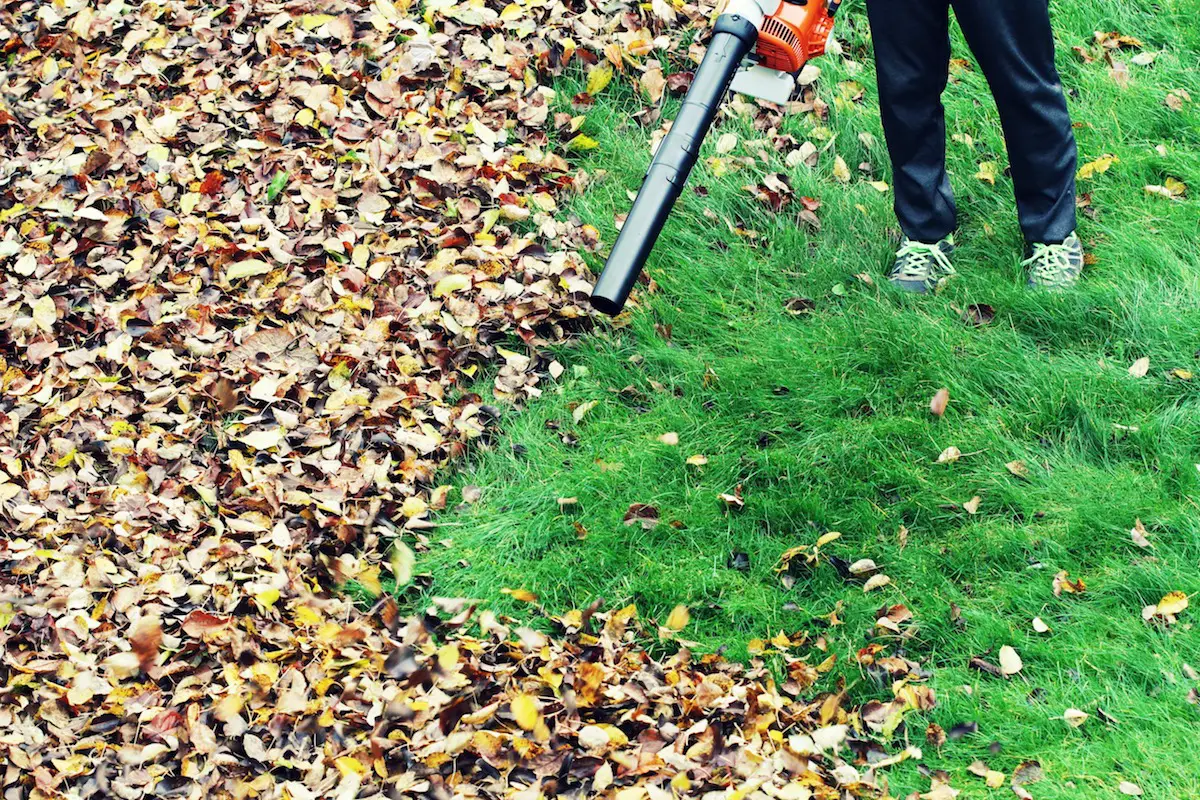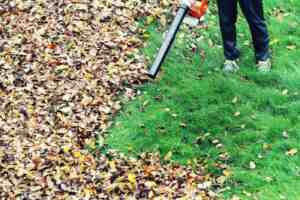What Happens If a Leaf Blower Gets Wet?
Leaf blowers are generally designed to withstand some level of exposure to moisture, such as light rain or dew. However, they are not completely waterproof and should not be submerged in water or exposed to heavy rain or water pressure.
How to Clean a Wet Leaf Blower
Cleaning a wet leaf blower requires a careful approach to ensure that it dries properly and any potential water damage is minimized. Here’s a step-by-step guide on how to clean a wet leaf blower:
1. Safety First
Before starting the cleaning process, make sure the leaf blower is completely powered off and unplugged from the power source. This is important to prevent any electrical accidents.
2. Remove the Battery (if applicable)
If your leaf blower is battery-powered, remove the battery before proceeding with cleaning. Set it aside in a safe, dry place.
3. Wipe Off Excess Moisture
Use a dry cloth or towel to gently wipe off any visible water or moisture from the exterior of the leaf blower. Pay attention to the motor, air vents, and any openings where water may have entered. Be careful not to force water into any openings.
4. Disassemble (if possible)
If your leaf blower has detachable parts, such as the nozzle or tubes, remove them to allow better access for drying and cleaning. Refer to the manufacturer’s instructions if you’re unsure about disassembly.
5. Air Drying
After wiping off the excess moisture, allow the leaf blower to air dry in a well-ventilated area. Do not use any heat sources or direct sunlight to speed up the drying process, as this can damage the internal components. It is crucial to let it dry thoroughly to prevent water damage.
6. Inspect for Water Ingress
Once the leaf blower is dry, carefully inspect the internal components, including the motor, switches, and wiring, for any signs of water ingress. Look for water droplets, dampness, or corrosion. If you notice any water inside the blower or suspect damage, it’s advisable to have it checked by a professional or contact the manufacturer for guidance.
7. Reassemble and Test
Once the leaf blower is dry and free from any water damage, reassemble any detached parts and ensure they are securely in place. Reinsert the battery if applicable. Test the leaf blower to ensure it operates normally before using it again.
Remember, prevention is key to avoiding water damage. It’s best to avoid using a leaf blower in wet conditions or exposing it to excessive moisture. Proper storage in a dry location when not in use can also help protect it from water-related issues.
If you have concerns or specific instructions regarding cleaning or water exposure for your particular leaf blower model, refer to the manufacturer’s guidelines or reach out to their customer support for further assistance.
Is It Safe to Leaf Blower Wet Leaves?
Using a leaf blower to blow wet leaves is generally not recommended. Wet leaves tend to be heavier and clump together, which can make them more challenging to handle with a leaf blower. Additionally, blowing wet leaves with a leaf blower can have some potential drawbacks and safety concerns:
1. Reduced Effectiveness
Wet leaves are often more stubborn and difficult to move compared to dry leaves. The airflow from a leaf blower may not be as effective in dispersing wet leaves, potentially requiring more effort and time to achieve the desired results.
2. Clogging and Damage
Wet leaves have a higher tendency to clump together, which can lead to clogging in the blower’s intake or nozzle. Clogging can decrease the blower’s performance and potentially cause damage to the motor or other internal components.
3. Slippery Surfaces
Wet leaves can create slippery surfaces, increasing the risk of slips, falls, or loss of control while operating the leaf blower. It’s important to prioritize safety and ensure stable footing when working in wet conditions.
If you need to clear wet leaves from your yard or outdoor area, there are alternative methods that may be more effective and safer:
1. Raking
Using a rake is a traditional and reliable method for gathering and removing wet leaves. Raking allows for better control and collection of the leaves, minimizing the risk of clogging or damage to equipment.
2. Mulching Mower
Consider using a mulching mower equipped with a bagging attachment. This allows you to mow over the wet leaves, which are then chopped into smaller pieces and collected in the bag for easier disposal.
3. Wait for Leaves to Dry
If it’s possible, wait for the leaves to dry before using a leaf blower. Once they have dried out, they will be lighter and more easily moved by the blower’s airflow.

What to Look For in Leaf Blowers for Wet Leaves
When looking for a leaf blower specifically for wet leaves, there are a few key features and factors to consider. Here’s what to look for:
1. Airflow Power
Wet leaves are heavier and more challenging to move than dry leaves. Therefore, you’ll want a leaf blower with sufficient airflow power to effectively handle wet leaves. Look for models with high airspeed and airflow ratings, as they will have better-blowing capabilities for wet debris.
2. Variable Speed Control
Having variable speed settings allows you to adjust the airflow power according to specific conditions. This flexibility is beneficial when dealing with wet leaves, as you may need more power to move them effectively.
3. Nozzle Design
Consider the nozzle design of the leaf blower. Look for a narrow or tapered nozzle, as it can help concentrate the airflow and provide better control when targeting wet leaves. This design aids in breaking up clumps and directing the airflow to specific areas.
4. Durability and Water Resistance
Since you’ll be using the leaf blower for wet leaves, it’s important to choose a model that is durable and water-resistant. Look for leaf blowers with sturdy construction and components that can withstand moisture exposure. Check if the blower has any water-resistant or waterproof features to ensure its longevity.
5. Easy Maintenance and Cleaning
Wet leaves can create more debris and residue, leading to potential clogging or buildup in the blower. Choose a leaf blower that is easy to clean and maintain. Look for models with detachable parts or easy access to the air intake and nozzle, making it simpler to remove any accumulated debris.
6. Comfort and Ergonomics
Using a leaf blower for extended periods can be tiring. Look for models that have ergonomic designs, lightweight construction, and comfortable handles. This will make it easier and more comfortable to handle the blower when dealing with wet leaves.
7. Noise Level
Leaf blowers can be noisy, so consider the noise level when selecting a model. Some leaf blowers are designed with noise-reducing features, which can be beneficial if you live in a noise-sensitive area, prefer a quieter operation, or want to lower noise pollution in your area.
Conclusion
It’s worth noting that using a leaf blower for wet leaves still has its limitations. Wet leaves tend to clump together and can be more challenging to handle, regardless of the blower’s features. If possible, allowing the leaves to dry out or using alternative methods like raking or a mulching mower may be more effective for wet leaf removal.
Always follow the manufacturer’s recommendations and guidelines for usage, maintenance, and safety when operating a leaf blower.


